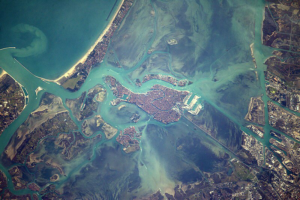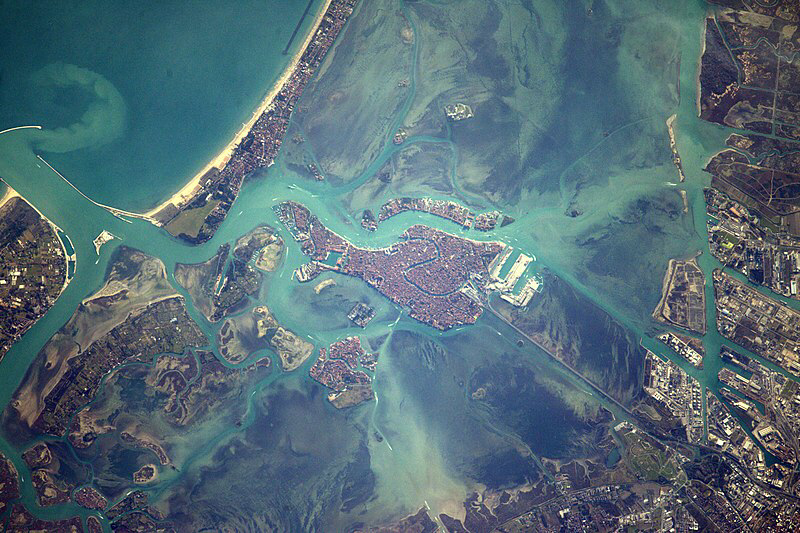
New Orleans, in Louisiana; Shishmaref, in Alaska; and Venice, in Italy: What do they all have in common? They’ve all had to deal with inundating waters, whether this be the result of storm surges brought on by inclement weather or that which has been caused by global warming. Miami, Florida, come to think of it, is another.
Shishmaref – a western Alaskan island community within eyeshot of the Bering Strait with a population of about 576 people – is literally shrinking. Global warming has exacted a toll. GW is not only responsible for the rising seas whose pounding tides are reshaping shoreline stretches and shortening the duration of ice formation, but the warmer temperatures are resulting in area permafrost thaw making the shoreline subject to even more erosion on account of it, which, in turn, has forced those affected to pull up stakes and relocate. It’s a truly sad state of affairs.
Over time, more and more areas are expected to become similarly impacted as temperatures continue to climb.
In other parts of the world, meanwhile, droughts are inflicting their own wraths.
Where there is too little precipitation, this may lead to land subsidence issues from water being drawn from subsurface aquifers.
Okay, considering these circumstances, how are the building, commercial and residential sectors being so-impacted responding?
This is the topic area of discussion in this, the third and final installment in the series.
Resilience-building
As long as humankind has been in existence, essential for existence endurance, maintenance, perpetuation, preservation, is the concept of adaptation. We have had to learn to adapt to changing conditions, whatever those may have been. We have made adjustments along the way. That “routine” if you will, is the same today.
Once again and now with global warming and climate change we have arrived at yet another crossroads: either maintain a business-as-usual building paradigm or make adjustments as a means to adapt to the changing conditions currently confronting us.
There are some places that have done exemplary. Take, for example, Amsterdam in The Netherlands. This city has employed various techniques to keep the sea waters at bay, quite literally, such as incorporating an array of barriers like dikes and installing windmills to keep the city from getting submerged. And this adaptation and mitigation effort has worked quite successfully. To a certain extent, New Orleans has done the same.
In the Outer Banks and Gulf Coast regions, it’s been more of the same kind of things. Homes or businesses that were previously partly or fully destroyed have been rebuilt, many erected on stilts which when impacted by tidal storm surges, either are lightly impacted or completely unaffected.
On America’s west coast, meanwhile, the story has been much the same.
There have been cases of sea-cliff erosion where properties have, if you will, been swallowed up by the sea. The battle has been ongoing and, with average air temperatures expected to continue to rise, what is likely to happen is that we will hear or read reports of more of these types of erosion-related stories.
Back to Shishmaref, Alaska, there have been land-erosion-forced relocations. There are plans to relocate all island residents to the mainland, but, so far, that has not happened. And, Shishmaref townsfolk are not alone. Island nations like the Maldives, for instance, have been similarly affected.
The key here is to get and stay ahead of this.
Feeling – and dealing with – the heat
On the other side of the coin is the pounding, seemingly unrelenting heat and the effect this has had.
Out west, such circumstance has prompted vast tree die-offs making the so-affected trees highly susceptible to catching fire.
The higher temperatures have caused fire seasons in many parts to last for the entire year as opposed to their being specified between “begin” and “end” dates.
Wildfires in the West lately have caused damage impacts totaling in the billions of dollars – that’s “billions” with a “B.”
Surprisingly, some properties have been rebuilt on the exact same land parcels as they were before the devastating wildfires swept through.
Others, meanwhile, have been rebuilt in far less fire-prone zones.
And, although not an air-quality related matter per se, but nonetheless a top-of-mind issue is the water-scarcity crisis affecting many in the desert southwest. With supplies dwindling, people are worried about their own water supplies running dry. They are finding themselves figuratively between a rock and a hard place. There are no easy answers here on how the crisis can be resolved. But, as this is being written, efforts to conserve is perhaps the best approach.
Though, there is some good news. As a result of the melt from all of the recent mountain snows, some reservoirs are starting to fill back up. But, without sustained sufficient annual rainfall and higher elevation snowfall dumps, such reservoir supplies will not be able to be maintained.
Which begs the question: will future building be more of the same ol’, same ol’? Or will a changing climate and its effects prompt a rethinking and create a new paradigm where the way in which we build takes into consideration the changing climatic condition? It’s an extremely important question and one that definitely needs addressing!
Parts I and II can be read here and here.
Above and corresponding, connected home-page-entry images: NASA
Last updated on May 20, 2023 at 9:50 a.m. Pacific Daylight Time.
⁃ Alan Kandel
Copyrighted material.
